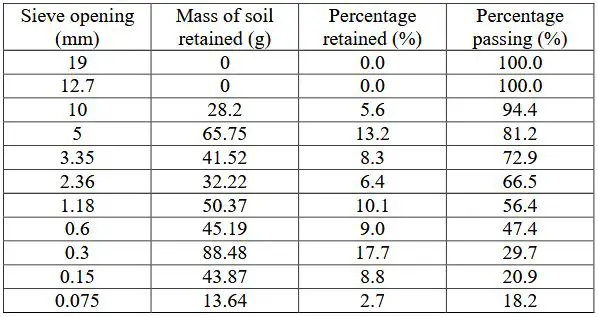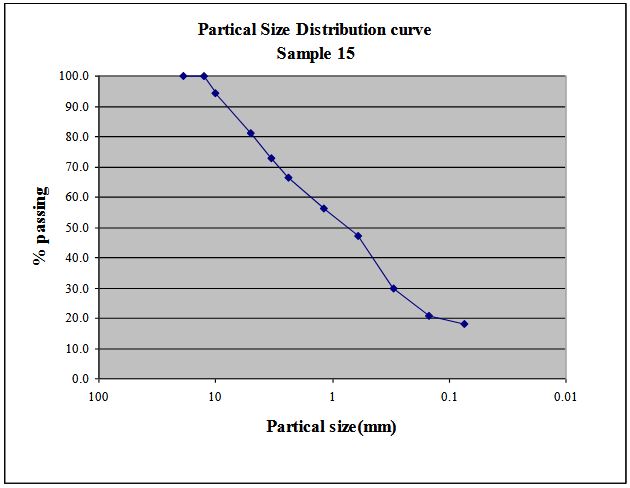There are some basic soil tests that can be used to investigate the approximate engineering behavior of soils. The most commonly used basic soil tests are particle size analysis and the Atterberg limits.
1. Particle size analysis
Particle size analysis attempts to estimate the relative proportions of the various grain sizes that make up a specific soil mass. Obviously, in order for the results to be meaningful, the sample must be statistically representative of the entire population. In reality, determining specific particle sizes is impossible; the test can only approximate the size range between two sieves.
Size bracketing is achieved by stacking a series of sieves with aperture sizes varying from the largest at the top to the smallest at the bottom and sifting a known amount of material through the stack. Place the material on the top sieve and shake to separate the particles into smaller diameters from top to bottom. Sieves are formed of woven wire and have rectangular apertures that range in size from 101.6 mm (4 No. 400 (0.038mm) in the fine series to No. 400 (0.038mm) in the coarse series.
The smallest feasible sieve size is No. 200 (0.075mm). This mesh is about the smallest size that allows water to travel through it quite freely. The No. 200 sieve is used as a dividing point in all soil classification systems; that is, classifications are made in terms of the amount retained or passed through the No. 200 sieve. When determining the particle size, a sieve smaller than the No. 200 is required. Here, hydrometer analysis is employed to determine the size variation of soil particles smaller than No. 200.

2. Sieve Analysis
The sample preparation for the sieve analysis test is specified by ASTM D421, and the test process is established by ASTM D422. First, the dirt is oven dried, and any large lumps are broken up into little pieces. The sieve stack is built with progressively larger sieve apertures, and the pan is placed at the bottom. Normally, the stack is constructed in such a way that the sieve number of the sieve below it is roughly double that of the sieve above it.
Table 1 shows the sieve numbers and apertures required by various standards. The sample is deposited in the top sieve, and the cover is placed to prevent sample spillage during shaking. The sample is placed in a sieve shaker and agitated for 5 minutes. The proportion of soil flowing through each sieve is then calculated using the percentage of soil weight retained on each sieve.
The particle size distribution curve is then calculated by plotting a semi-logarithmic plot of % passing through against sieve size, as illustrated in Figure 2. If the sample has a significant clay content, wet sieving is performed by first washing it through a No. 200 sieve. After washing, the piece that remains on the No. 200 sieve is oven dried and employed in the sifting process.
Table 1: Sieve openings and sieve numbers (ASTM)

Grain sizes such as D10, D30, and D60 can be calculated from the particle size distribution curve, corresponding to 10%, 30%, and 60% passing rates, respectively. The parameters listed below can then be specified.
Uniformity Coefficient (Cu):

Coefficient of gradation (Cc):

Table 2 shows the typical results of the sieve analysis test, and Figure 2 shows the Particle Size Distribution (PSD) curve.
Table 2. Sieve analysis test results













